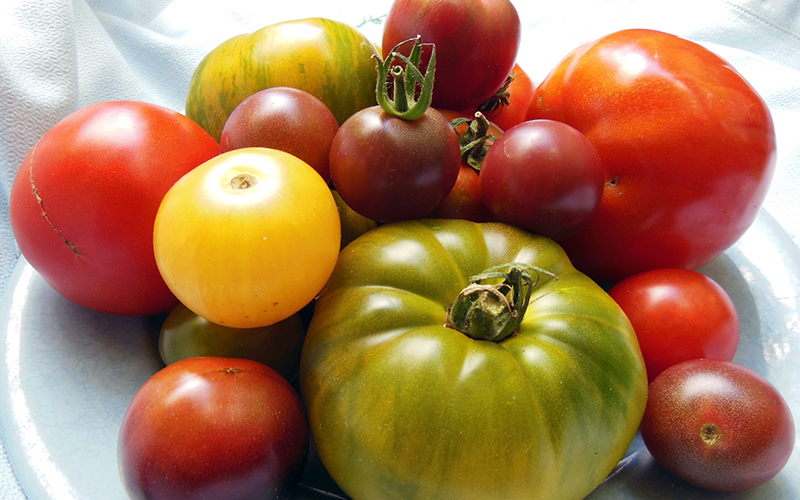
by the editors at Rodale’s Organic Life
Here’s your July gardening guide for North America’s USDA Plant Hardiness Zones: 3-10. If you don’t know what zone you live in, check the map here to find out. We’ve left off zones 1–2 (far-north Alaska) and zones 11–13 (small section of the Florida Keys, the Pacific coast between L.A. and Mexico, and Hawaii) since zones 3–10 cover 99 percent or more of the gardeners in the U.S.
Zone 3
- Hill soil around potatoes and carrots to prevent green shoulders.
- Continue to stake and tie up tall plants, such as raspberries, roses, dahlias, and peas.
- Brighten your home with bunches of cut flowers.
- Don’t cut grass lower than 2½ inches tall.
- Water lawns, trees, and shrubs in dry weather.
- Water annuals at least three times a week during periods of intense heat with no rain.
- Continue to add organic matter to the soil to retain moisture.
- If collecting seeds from mature plants, harvest only from the most healthy plants; label storage containers.
Zone 4
- Sow a second planting of green beans and summer squash.
- Use Bacillus thuringiensis on cabbageworms and other caterpillars.
- Divide crowded iris and daylily clumps.
- Spread mulch and irrigate to keep soil moist in dry weather.
- Set out transplants for fall crops of broccoli, cabbage, and cauliflower.
- Sow seeds of kale and Chinese cabbage for fall harvest.
- Add new perennials to flowerbeds.
- Remember that you can still plant potted or balled trees and shrubs, but water them well.
Zone 5
- Reseed dill and cilantro every few weeks for continuous harvest and to attract beneficials with blooms.
- Sow autumn peas; presoak seeds for a faster start.
- Harvest summer squash and cukes while they’re still young and tender.
- Start seeds of Shasta daisies in a coldframe, where they’ll overwinter until large enough to plant next spring.
- Harvest vegetables and flowers in the cool of the morning.
- Shear back tired-looking impatiens and petunias by half, then boost their regrowth by feeding with fish emulsion.
Zone 6
- Keep harvesting veggies and annual flowers regularly to keep plants producing.
- Plant last runs of bush beans and summer squash.
- For fall harvest, sow carrots, kale, beets, and chard for fall crops; also set out transplants of cabbage, cauliflower, and broccoli.
- Prune out old, woody raspberry and blackberry canes.
- Presprout and then sow, snap, shelling, or snow peas.
Zone 7
- Savor the last summer berries, then prune out old, dying canes.
- For fall-bearing berries, lightly feed newer canes with fish emulsion or compost tea, then mulch with straw.
- Harvest potatoes when leaves begin to die back.
- At month’s end, sow seeds of collards, carrots, and rutabagas.
- To keep carrot seedbed moist, cover it with cloth or a board until seeds sprout.
- Stay on top of weeds.
- For bloom next year, start seeds of biennials, such as foxglove, hollyhock, evening primrose (Oenothera spp.), and lunaria.
Zone 8
- Set out fall tomatoes, peppers, and eggplants late this month.
- Sow Halloween pumpkins.
- Clean up the garden, then mulch the bare soil to conserve moisture.
- Mulch perennials and new trees with a layer of compost topped with bark mulch.
- Don’t overstimulate dormant plants with unnecessary water or feeding; they’ll resume growth when the weather cools.
- Tend the compost pile so it will be ready to work into the soil in preparation for fall planting.
- Set out ageratums, balsam (Impatiens balsamina), cockscomb, croton, feverfew, marigolds, petunias, wild blue phlox (Phlox divaricata), pinks (Dianthus spp.), portulaca and vinca (Catharanthus roseus).
- Add 2 to 3 inches of mulch to retain water.
Zone 9
- If foliage of midsummer-blooming roses begins to yellow, check soil pH—add sulfur if it tests much above 7.
- Keep roses well watered to promote bloom into late fall.
- Early in the month, cover fruit trees with nets to protect fruit from birds.
- Spread compost on areas where you plan to grow fall veggies and flowers.
- For fall harvest, plant lettuce, carrots, beets, turnips, early beans, brassicas, and summer squash.
- Protect peppers, tomatoes, eggplants, and lettuce from sun scald by providing partial shade.
- Remember that you can still sow fast-blooming portulaca and sunflowers.
- Prune back chrysanthemums for bushier plants in fall.
Zone 10
- To grow roses here, be sure they’re grafted onto ‘Rosa ✕ fortuniana’ rootstock, which is nematode-and disease-resistant.
- Feed roses with compost, fish emulsion, and seaweed spray.
- For late summer planting, start seeds of collards, okra, eggplant, southern peas, and heat-resistant tomatoes.
- Pay attention to gardenias, walking iris (Neomarica caerulea), and monstera (Monstera deliciosa)—all are susceptible to iron deficiencies and may need supplemental feedings.
- Harvest full-size monstera fruit, bring it indoors, and put it in a paper bag with an apple slice to finish ripening.
- Turfgrass is growing fast—mow high and never remove more than one-third at a time.
- When working outdoors in heat, take frequent breaks and drink plenty of water.
Previously published on RodalesOrganicLife.com




No comments yet.